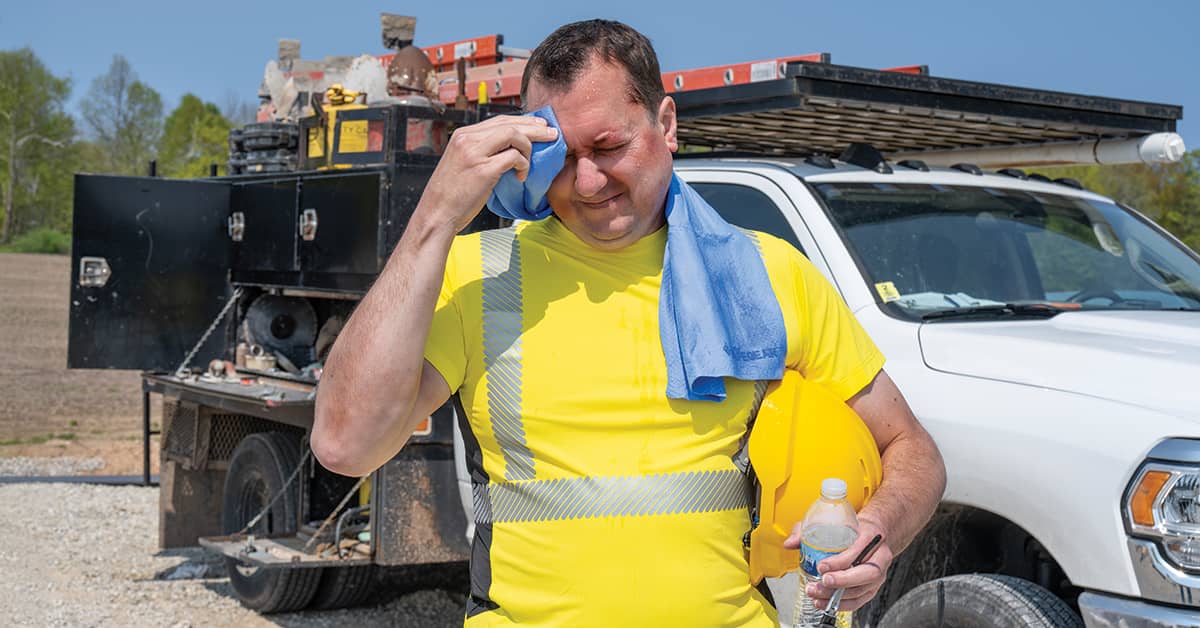Hot topics: OSHA’s Heat rule, state heat regulations, and more
Date Posted: 06/23/2025

Summer is here and OSHA is in the midst of its Heat rule hearing. Following are popular questions our experts receive related to heat.
Q: When will OSHA’s proposed Heat rule become a final rule?
A: The agency has scheduled a virtual public hearing over multiple days for its proposed Heat rule. The hearing began June 16 and will end July 2. Following this, OSHA will determine next steps. This may include reviewing comments it received, revising the proposed rule as necessary, and moving forward with a final rule.
Q: How does the proposed Heat rule define indoor work?
A: “Indoor” is defined in the proposed rule as “an area under a ceiling or overhead covering that restricts airflow and has along its entire perimeter walls, doors, windows, dividers, or other physical barriers that restrict airflow, whether open or closed.” Examples include:
- A garage, even if the door is open;
- The interior of a warehouse, even if multiple doors are open on loading docks; and
- A shed with four walls and a ceiling, even if the windows are open.
Construction activity is considered “indoors” when performed inside a structure after the outside walls and the roof are built.
Q: Which states have their own heat regulations?
A: Several states have their own heat-related regulations. Note that they vary in the type of industries covered, whether they apply to indoor and/or outdoor workplaces, and the expectations and requirements for employers. These states are:
- California
- Colorado
- Maryland
- Minnesota
- Nevada
- Oregon
- Washington
Additionally, Arizona and OSHA Region IX have launched emphasis programs.
- Arizona — In July 2023, Arizona implemented a state emphasis program (SEP) to reduce worker exposure to heat-related hazards in indoor and outdoor workplaces. In May 2025, the state’s governor formed a heat safety task force, with the goal of developing employer guidelines on heat safety by the end of 2025.
- OSHA Region IX — This region adopted a regional emphasis program (REP) for heat illness in November 2022. It applies to indoor and outdoor worksites where potential heat-related hazards exist in Alaska, American Samoa, Arizona, California, Guam, Hawaii, Idaho, Nevada, the Northern Mariana Islands, Oregon, and Washington.
And finally, several states and territories adopted OSHA’s National Emphasis Program (NEP) for indoor and outdoor heat hazards (CPL 03-00-034). Some adopt it identically and others made changes. These include California, Connecticut, Hawaii, Massachusetts, Maryland, Maine, Michigan, New Jersey, New Mexico, Nevada, New York, Oregon, Puerto Rico, South Carolina, Virginia, the Virgin Islands, Vermont, and Washington.
Q: Can OSHA cite our warehouse for heat hazards?
A: Yes, OSHA can cite your warehouse for heat hazards. In fact, under the agency’s NEP (CPL 03-00-034), OSHA compliance officers must initiate inspections in any of the 70 listed, high-risk industries (including the warehousing and storage industry) in outdoor and indoor work settings when the National Weather Service issues a heat warning or advisory for a local area.
Inspectors will review illness logs and other records, interview workers, determine if the employer has a heat illness prevention program, document ambient conditions, and identify work activities relevant to heat-related hazards.
If there’s sufficient evidence to issue a citation for heat-related hazards, a citation under the General Duty Clause, Section 5(a)(1) of the Occupational Safety and Health Act, will be issued.
How Safety Management Suite Can Help
If you’ve got regulatory or other compliance questions, we can help! Submit your question through the Expert Help feature in the J. J. Keller® SAFETY MANAGEMENT SUITE. Our experts typically respond in a few hours, and no more than one business day.
E-mail Newsletter
Sign up to receive the weekly EHS Insider email newsletter for safety articles, news headlines, regulatory alerts, industry events, webcasts, and more.